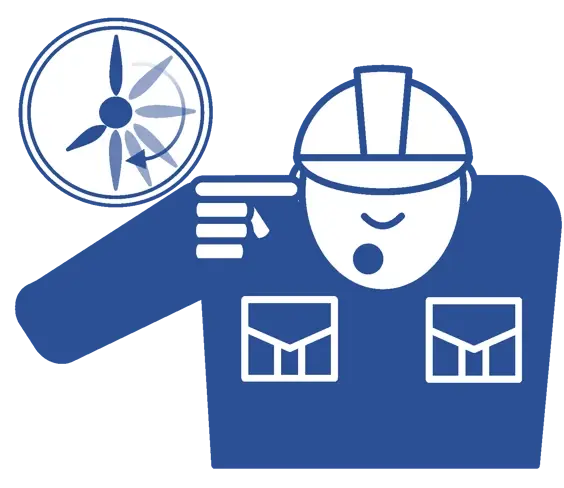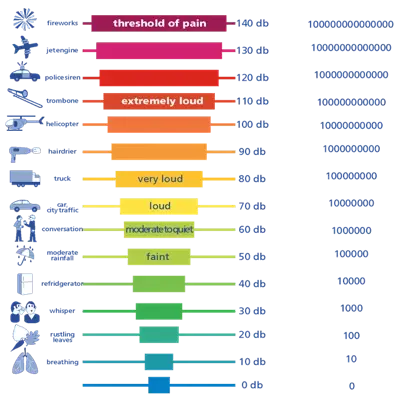Health & Safety noise regulations
This may come as a big surprise to you, but it was only back in 1981 that the Occupational Safety and Health Administration (OHSA) issued “new requirements to protect all workers in general industry (e.g. the manufacturing and the service sectors) for employers to implement a Hearing Conservation Programme where workers are exposed to a time weighted average noise level of 85 dBA or higher over an eight-hour work shift.” Prior to that, the only basic protection workers had in relation to health and safety at work was based on the Factories Act 1833 and yes, that was nearly 180 years ago!
Subsequent to the Hearing Conservation Program, in 2005 the Control of Noise at Work Regulation was passed which required employers to both mitigate risks of excessive noise at work and reduce the health and safety risks associated with noise in the workplace.
Health and Safety regulations only cover noise at work and not noise at home
There are many functions we can carry out at work where we are required to wear appropriate ear defenders, yet we rarely, if ever, take such precautions when performing tasks which are just as noisy, if not noisier at home. As an example, you will never see someone at work using a jackhammer without wearing ear defenders, yet how many people do you know who wear ear defenders when using a hairdryer? If you think that is a bizarre question to ask, the reason is that both noise levels are the same, around 110db, which can damage your hearing. The principal difference between work and home is the length of time you are exposed to constant noise at an unsafe level.
The effects of sustained or short blasts of loud noises
Perhaps the easiest way to imagine the effects of sustained noise, or one loud blast of noise on your hearing is to imagine the hairs surrounding the cochlea (as mentioned above) like apples on a tree just a few weeks before they are ripe. If you shake a branch gently (representing sound waves below 85db) very little will happen. If you continue to shake the branch gently, still nothing will happen. However, if you ‘turn up the volume to 85db’ and shake the branch of the apple tree more vigorously, while no apples may immediately fall, when the shaking is continual, then one by one the apples will fall to the ground as their stems become weakened. If you give the branch a single, almighty clatter (representing noise of 160db), the branch will either break (you go deaf), or perhaps half the apples fall to the ground (you go partly deaf). Like apples, the hairs surrounding the cochlea, once damaged, cannot be repaired, just as you can’t reattach a fallen apple to the branch.
Further physical effects of prolonged exposure to noise
The Journal of Applied Psychology published a study which revealed that those workers in an office environment who were exposed to prolonged noises adjusted their posture less frequently and were more prone to slumping at their desk, which risked the development of musculoskeletal disorders. In addition, beyond hearing loss, excessive noise in the workplace can also lead to tinnitus, hypertension, ischemic heart disease, annoyance, and sleep disturbance, as well as affecting the immune system and increasing rates of diabetes.
Constant loud noise can seriously affect your mental health, not just your hearing
According to Health Assured, a 2019 noise and wellbeing at work survey revealed that 44% of those interviewed “believed working in noisy conditions harmed their stress levels and overall wellbeing.” Constant exposure to loud noise can lead to mental fatigue, stress-related illness, and depression. Curiously, many employees may well be aware that excessive noise in the workplace can lead to physical as well as mental health problems, and this knowledge can lead to increased stress levels in a noisy environment. It may well be worth you looking at the Commodious Mental Health Awareness course if this is an aspect of health and wellbeing of your staff you are not fully ‘au fait’ with.
Excessive noise in the workplace can greatly affect productivity
Closely linked to the direct mental effects of excessive noise is productivity. To begin with, one of the side-effects of excessive, continual noise is its negative impact on motivation. Once motivation becomes reduced, so does productivity. This lack of motivation also affects the ability to face challenges and problem solve, primarily as a consequence of reduced concentration levels. Beyond this, increases in feeling stressed can also reduce productivity, and exposure to excessive noise has been shown to increase the body’s level of epinephrine, a hormone closely associated with increased stress levels.
Almost every working environment can benefit from a noise reduction policy, so feel free to check out our helpful blog article with 10 useful noise reduction tips.
In conclusion
Excessive noise in the workplace is both harmful to a company’s employees, but also harmful to a company’s productivity and therefore, profitability. According to the World Health Organisation (WHO), the annual cost to Europe from excessive noise levels is estimated at £30 billion. This figure is calculated in terms of lost working days, healthcare costs, impaired learning and reduced productivity.
Here at Commodious, we specialise in providing online courses on Health, Safety and Compliance. If you would like to learn more about Noise Awareness, designed specifically for managers and senior company employees, you can check out the training course.



